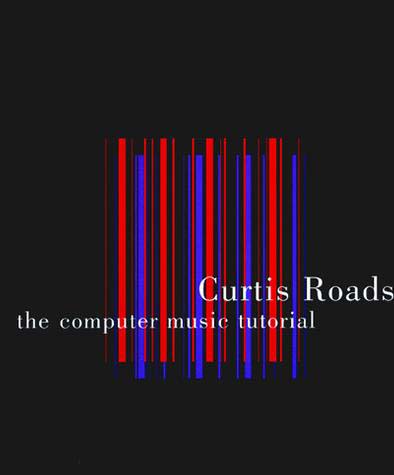Félix Guattari, Antonio Negri: New Lines of Alliance, New Spaces of Liberty (1985/2010)
Filed under book | Tags: · autonomy, communism, ideology, politics, social movements, subjectivation

“The project: to rescue ‘communism’ from its own disrepute. Once invoked as the liberation of work through mankind’s collective creation, communism has instead stifled humanity. We who see in communism the liberation of both collective and individual possibilities must reverse that regimentation of thought and desire which terminates the individual….”
Thus begins the extraordinary collaboration between Félix Guattari and Antonio Negri, written at dawn of the 1980s, in the wake of the crushing of the autonomous movements of the previous decade. Setting out Guattari and Negri diagnose with incisive prescience transformations of the global economy and theorize new forms of alliance and organization: mutant machines of subjectivation and social movement.
Prefiguring his collaboration with Michael Hardt, Negri and Guattari enact a singular hybridization of political and philosophical traditions, brining together psychiatry, political analysis, semiotics, aesthetics, and philosophy. Against the workings of an increasingly integrated world capitalism, they raise the banners of singularity, autonomy, and freedom to search out new routes for subversion.
This newly expanded edition includes previously untranslated materials and a new introduction by Matteo Mandarini.
Main text originally published in French in 1985 as Les nouveaux espaces de liberté. First English edition, 1990, published under the title Communists Like Us.
Translated by Michael Ryan, Jared Becker, Arianna Bove, and Noe Le Blanc
Edited by Stevphen Shukaitis
Publisher: Minor Compositions, London / New York in conjunction with Autonomedia and MayFlyBooks
ISBN 978-1-57027-224-0
144 pages
PDF (updated on 2012-7-27)
Comment (0)Curtis Roads, et al: The Computer Music Tutorial (1996–) [English, French]
Filed under book | Tags: · algorithm, computer music, music, music theory, sound recording, sound synthesis

“The Computer Music Tutorial is a comprehensive text and reference that covers all aspects of computer music, including digital audio, synthesis techniques, signal processing, musical input devices, performance software, editing systems, algorithmic composition, MIDI, synthesizer architecture, system interconnection, and psychoacoustics. A special effort has been made to impart an appreciation for the rich history behind current activities in the field.
Profusely illustrated and exhaustively referenced and cross-referenced, The Computer Music Tutorial provides a step-by-step introduction to the entire field of computer music techniques. Written for nontechnical as well as technical readers, it uses hundreds of charts, diagrams, screen images, and photographs as well as clear explanations to present basic concepts and terms. Mathematical notation and program code examples are used only when absolutely necessary. Explanations are not tied to any specific software or hardware.”
Publisher MIT Press, 1996
ISBN 0262680823, 9780262680820
xx+1234 pages
Reviews: Sam Reese (Bulletin of the Council for Research in Music Education, 1997), Douglas Geers (Current Musicology, 2001), Gregory Taylor (Cycling ’74, 2016).
The Computer Music Tutorial (English, DJVU, 22 MB, updated on 2021-4-8)
L’audionumérique: musique et informatique (French, trans. Jean de Reydellet, 3rd ed., 1999/2016, 15 MB, added on 2021-4-8)
Corrections and revisions (added on 2017-11-20, updated on 2021-4-8)
Nils L. Wallin, Björn Merker, Steven Brown (eds.): The Origins of Music (1999)
Filed under book | Tags: · biology, biomusicology, cognition, ethnomusicology, evolution, language, linguistics, music, music history, music theory, neuroscience, sound recording

What biological and cognitive forces have shaped humankind’s musical behavior and the rich global repertoire of musical structures? What is music for, and why does every human culture have it? What are the universal features of music and musical behavior across cultures? In this groundbreaking book, musicologists, biologists, anthropologists, archaeologists, psychologists, neuroscientists, ethologists, and linguists come together for the first time to examine these and related issues. The book can be viewed as representing the birth of evolutionary biomusicology—the study of which will contribute greatly to our understanding of the evolutionary precursors of human music, the evolution of the hominid vocal tract, localization of brain function, the structure of acoustic-communication signals, symbolic gesture, emotional manipulation through sound, self-expression, creativity, the human affinity for the spiritual, and the human attachment to music itself.
Contributors: Simha Arom, Derek Bickerton, Steven Brown, Ellen Dissanayake, Dean Falk, David W. Frayer, Walter Freeman, Thomas Geissmann, Marc D. Hauser, Michel Imberty, Harry Jerison, Drago Kunej, François-Bernard Mâche, Peter Marler, Björn Merker, Geoffrey Miller, Jean Molino, Bruno Nettl, Chris Nicolay, Katharine Payne, Bruce Richman, Peter J. B. Slater, Peter Todd, Sandra Trehub, Ivan Turk, Maria Ujhelyi, Nils L. Wallin, Carol Whaling.
Publisher MIT Press, 2001
Bradford Books series
ISBN 0262731436, 9780262731430
512 pages
PDF (updated on 2012-8-3)
Comment (1)
